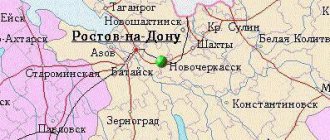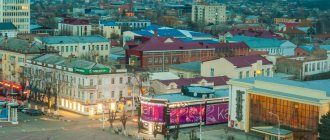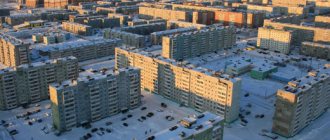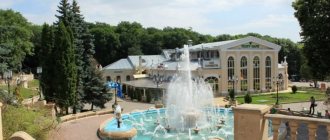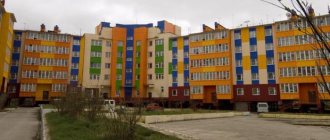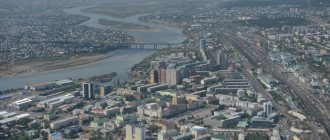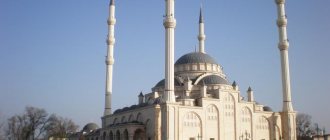Yalta is a popular destination visited by Russian tourists. And since the time the city began to be located in Russia, the flow of tourists has increased significantly. The explanation is simple: the climate in Yalta is pleasant Mediterranean, and the city itself has a rich history and many attractions that have been preserved for many years.
Location
“Where is Yalta?” - this question may be asked by many citizens who have never been to the wonderful city. And in view of recent political events, many will have doubts in which country he is located. The city of Yalta is located in the Republic of Crimea - a peninsula washed by the Black and Azov seas. The map shows that Yalta is located in the southern part of this peninsula, located directly next to the sea.
This location has a great effect on its climatic characteristics, which have attracted various nations since ancient times, and today attract a large flow of tourists. Tourism in Yalta is one of the key development areas that attract financial flows to the budget. According to official estimates, more than 2 million people come to Yalta on vacation every year.
Marriages and divorces
Rosstat data show that the number of officially registered marriages in relation to the total number of citizens is decreasing every year. So, if in 1990 20,541 marriage records were registered, which amounted to 9.7 (per 1 thousand people), then in 2018-2020. Just over 11,000 marriages were registered annually. The coefficient dropped to 6-6.5.
2019 data
Men, like women, most often get married at the age of 25-34, but the percentage of women who decide to get married at 18-24 is also high, twice as high as the same figure for men in the same age group – 3500-4000 women for 1900-2000 men. A large number of marriages take place after 35 years. Early marriages are gradually becoming obsolete. If in 2000 - 2001. Before turning 18, 561 women formalized relationships; in 2022 there were only 50 such women, and in 2022 even less.
Of the 11,000 marriages concluded, approximately 6-7 thousand break up. This figure does not change from year to year. The lowest number of divorces was recorded in 2012-2013. During this period, the divorce rate was 1.2 and 1.1 compared to the current 3.5.
Story
Previously, this territory was inhabited by the Tauri tribes, who lived on the territory of Yalta long before our era. Taking advantage of the pleasant climate and coastal location, the Tauri were engaged not only in fishing and agriculture, but also did not hesitate to rob ships passing by. The settlement itself was most likely founded by the Greeks. Some of the Greek sailors, after long journeys, landed on the shore, which was given the name “shore”. The first historical mention dates back to 1154.
During the Middle Ages and the Renaissance, Yalta turned into an important trading hub, where merchants from various European countries often found refuge. In 1475, this territory was conquered by the formidable Ottoman Turks, and their vassal, the Khan of the Crimean Kingdom, was taken from the north of the city. And in 1793, Russia conquered the territory. There were very few people at that time - Yalta turned into a small fishing village. Since 1893, the Russian leadership began to allocate free land to citizens on the condition that citizens would engage in agriculture or industry. An actively financed construction industry leads to development and the city is rebuilt with sufficient luxury according to modern technological standards at that time.
Many doctors recommended the city as a resort with a healthy climate; Emperor Alexander III loved to relax in these parts, who, by the way, died in Yalta in 1894. Technical progress did not bypass the city either - development kept pace with the times, the number of workshops, and subsequently factories, constantly increased, and new sea and land trade routes also appeared. From 1921 to 1922 The city was called Krasnoarmeysk. From 1941 to 1944 Yalta was under German occupation; after liberation, the city had to be rebuilt, as many buildings were destroyed. The famous Yalta Conference took place in Yalta in 1945.
After the collapse of the USSR, the territory of Yalta became part of Ukraine. In 2014, after a popular referendum, Yalta, along with the entire peninsula, became part of the Russian Federation. Today about 80 thousand people live in Yalta. In addition to tourism, agriculture and industry are actively developed in this city.
Gender and age
Approximately the same number of men and women are constantly present on the territory of the peninsula. Thus, about 204 thousand males and 231 thousand females live in Sevastopol. At the same time, the percentage of people of retirement age is about 27%, slightly less than children under 16 years old – 16.5%.
The average life expectancy is 73-74 years, while the average age is 40.7-40.8 years.
What to see in Yalta?
Any foreign tourist, coming to a place unfamiliar to himself, strives to see how beautiful this country is. There really is something to please the eye here, because beautiful places in Yalta are found at every step, both created by nature and by man. The journey begins from the bus station. The bus station in Yalta is located on Moskovskaya street number 8. It is located within the city, and from it you can get to any part of Yalta, or to other cities of the peninsula. The main public transport of the city is connected to the bus station.
Twin cities - sister cities[edit]
See also: List of sister cities and sister cities in Ukraine
Yalta is twinned with: [10] [11] [12] [13]
- Antalya, Türkiye
- Baden-Baden, Germany
- Batumi, Georgia
- Eilat, Israel
- Fujisawa, Japan
- Grozny, Russia
- Kaluga, Russia
- Khachmaz, Azerbaijan
- Latakia, Syria
- Lugansk, Ukraine
- Margate, England, United Kingdom
- Nice, France
- Pozzuoli, Italy
- Rhodes, Greece
- Salsomaggiore Terme, Italy
- Sanya, China
- Sharm El Sheikh, Egypt
- Ulan-Ude, Russia
- Vladikavkaz, Russia
Seaside beach
Tourists are mostly in a hurry to go to the seaside beach in Yalta, as they have heard a lot about the stunning beaches of the resort capital of Crimea. Another plus: this beach is free to enter, and it is quite large and long (approximately 400m) so it can accommodate quite a lot of people. There are practically no large stones, the pebbles are very small, so stepping on them is quite comfortable.
The beach is located in the very center of the city, so it is well connected to other parts of it via transport. The Yalta beach has everything you need for a good holiday - umbrellas, sun loungers, a small market. Luggage storage and highly developed infrastructure. Moreover, the main hotels are located close to the seaside beach, so many tourists limit themselves to just visiting it. In fact, this is in vain, because the city has many pleasing sights.
Migration
Since 2004, statistics have reported a positive balance of migration. Since 2014, residents of the peninsula have been actively leaving their homes, leaving temporarily or for permanent residence in other regions of the Russian Federation, mainly in capital cities, the Moscow region and the Krasnodar Territory; the outflow of the population is associated with the search for work, a more favorable climate and a place for children to study . Part of the rural population moved to Sevastopol.
bird home
On the southern coast of Crimea, 11 kilometers from Yalta, one of the most important cultural sites in the region is located - Swallow's Nest. This castle, which was built in the neo-Gothic style, is located in the village of Gaspra, where many excursion routes go from Yalta. This building is located right on the edge of the cliff and looks great from the outside (like a building standing on the edge of a rocky shore). At different times, the owners of this building were different people, and it acquired its modern appearance in 1912. The building has gone through quite a lot of reconstructions, and today it is on the list of cultural heritage sites of the Russian Federation.
Population[ | ]
Population dynamics (until 2014 - the actual population of the City Council, for 2001 and 2014 - the permanent population)
[7]:
| Population | ||||||||
| 1939[8] | 1959[9] | 1970[10] | 1979[11] | 1989[12] | 2001[13] | 2009[14] | 2010[14] | 2011[14] |
| 36 653 | ↗93 414 | ↗126 983 | ↗149 078 | ↗163 230 | ↘144 434 | ↘141 152 | ↗141 226 | ↗141 304 |
| 2012[15] | 2013[15] | 2014[16] | 2015[17] | 2016[18] | 2017[19] | 2018[20] | 2019[21] | 2020[22] |
| ↗141 365 | ↗141 781 | ↘133 675 | ↗134 278 | ↗136 958 | ↗138 833 | ↗139 155 | ↗139 264 | ↘139 038 |
| 2021[2] | ||||||||
| ↘138 125 | ||||||||
According to the results of the population census in the Crimean Federal District, as of October 14, 2014, the permanent population of the urban district was 133,675 people (63.23% of which are urban, 36.77% rural)[23].
As of January 1, 2014, the population of Yalta with settlements subordinate to the City Council was 137,300 permanent residents and 142,137 people of the existing population[24], as of July 1, 2014 - 137,800 permanent residents and 142,637 people of the existing population[25].
National composition
According to the 2001 and 2014 censuses:
| nationality | 2001[26], total, people. | % from everything | 2014[27] total, people | % from everything | % of those indicated |
| indicated | 121424 | 90,84 % | 100,00 % | ||
| Russians | 91408 | 65,49 % | 89902 | 67,25 % | 74,04 % |
| Ukrainians | 38604 | 27,66 % | 23403 | 17,51 % | 19,27 % |
| Crimean Tatars | 1877 | 1,34 % | 2121 | 1,59 % | 1,75 % |
| Tatars | 476 | 0,34 % | 1029 | 0,77 % | 0,85 % |
| Belarusians | 2204 | 1,58 % | 1288 | 0,96 % | 1,06 % |
| Armenians | 813 | 0,58 % | 839 | 0,63 % | 0,69 % |
| Azerbaijanis | 368 | 0,26 % | 420 | 0,31 % | 0,35 % |
| Jews | 424 | 0,30 % | 209 | 0,16 % | 0,17 % |
| Greeks | 142 | 0,10 % | 195 | 0,15 % | 0,16 % |
| Moldovans | 273 | 0,20 % | 184 | 0,14 % | 0,15 % |
| Poles | 286 | 0,20 % | 174 | 0,13 % | 0,14 % |
| Georgians | 223 | 0,16 % | 166 | 0,12 % | 0,14 % |
| Uzbeks | 131 | 0,10 % | 0,11 % | ||
| Ossetians | 153 | 0,11 % | 111 | 0,08 % | 0,09 % |
| Mordovians | 97 | 0,07 % | 0,08 % | ||
| Bulgarians | 113 | 0,08 % | 90 | 0,07 % | 0,07 % |
| Germans | 108 | 0,08 % | 87 | 0,07 % | 0,07 % |
| Chuvash | 79 | 0,06 % | 0,07 % | ||
| other | 2112 | 1,51 % | 899 | 0,67 % | 0,74 % |
| not specified | 12251 | 9,16 % | |||
| Total | 139584 | 100,00 % | 133675 | 100,00 % |
Lavender fields
Many people don’t even realize that lavender fields, if visited at the right time, can leave one of the most vivid impressions of the trip. Everyone has heard about the lavender fields of France, but it is a fact that in Crimea they grow almost in no way inferior to France. Proof of this can be the fact that the largest lavender field in Europe is located in Crimea - near Yalta. Lavender leaves an impressive visual spectacle, and it is also widely used in cooking, cosmetology and other industries.
To see this stunning spectacle for yourself, you need to “catch” the field during its flowering period. Unfortunately, it is difficult to predict, since it depends on many different factors. Most often this happens in the summer, in June or July - during these months a large flow of tourists and indigenous residents of Crimea comes here. Each visitor, seeing such beauty with his own eyes, leaves the fields in great delight.
Monument to Pugovkin
Mikhail Pugovkin is one of the most famous Soviet actors. Without an actor, it is impossible to imagine such films as “Ivan Vasilyevich changes his profession”, “Soldier Ivan Brovkin”, “Wedding in Malinovka” and many others. The monument to the brilliant actor was erected in Yalta, near the Lenin embankment, next to many other objects. It was installed here for the reason that part of the filming of the famous comedy “Ivan Vasilyevich Changes His Profession” took place in Yalta, and the actor himself lived there in the 90s. the monument itself was opened in 2016.
The monument represents Pugovkin seated as at the moment of the episode when he played the director filming a video clip. An interesting feature is that the nose of the monument shines because many tourists rub it. As you know, one’s nose itches when it comes to money or booze, but where this tradition came from with this particular monument is not clear. The monument stands without a pedestal, is open to the public and is available for photographs by all interested tourists.
Where is the best place to move with children?
Old Yalta is definitely not recommended for families with small children or a desire to have them in the near future. It is difficult to fall asleep there, and there are not enough kindergartens and schools. The most suitable areas for living in this case are considered to be New Yalta, Chekhovo and Nikita.
The first option is suitable for people with average incomes - apartments in the area are relatively inexpensive, there are enough schools, kindergartens and playgrounds, and it will not be difficult for parents to get to work in any area.
Chekhovo is for the wealthier, and Nikita is for the wealthy. But in these places the environmental situation is better, and children will be able to play in their own safe courtyards. Massandra may also be a good option. There are schools and kindergartens in the area, the atmosphere is calm.
Parks
For the entertainment of Yalta residents and guests of the city, there are many park areas within its boundaries. There is a park with attractions right on the Yalta embankment. It is located within the entertainment town, next to the clothing market. The park has an impressive number of attractions and was built during the Soviet period. Both small children and teenagers will enjoy relaxing here. Adults will also be able to find something to do to their liking, or just have a nice time in the fresh air. At any time - both on weekdays and on weekends - a lot of people spend time in the parks.
Yalta to Crimea is a place that every person needs to visit, because this city is a combination of amazing nature, mild climate, developed beaches and a large number of city attractions. Any foreign tourist who visits this city will definitely recommend it to their friends or other tourists. Therefore, the popularity of Yalta is constantly growing.
